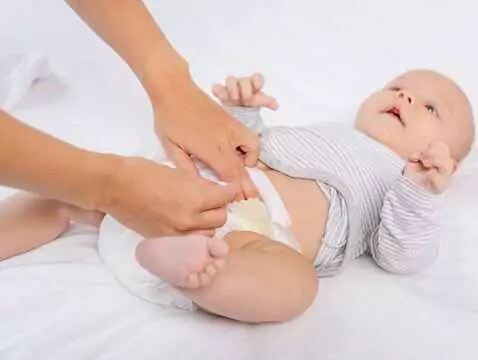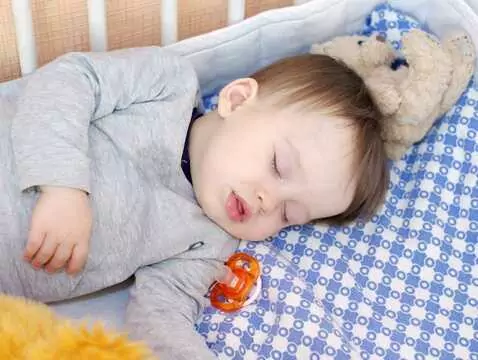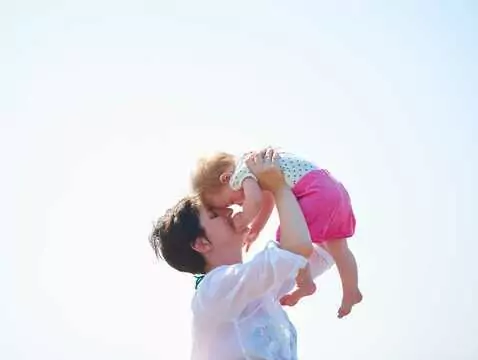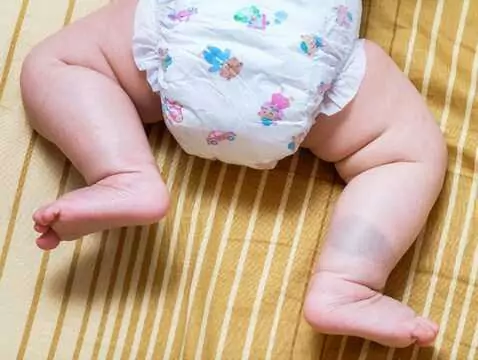Is my baby developing properly? Are his/her current behaviour and motor skills age appropriate? Do I need to see a paediatric neurologist urgently? An article by a specialist from the Silesian Paediatrics Centre in Zabrze answers these and other questions. The first part of the text discusses the child's development in the first 6 months of life.
Several scales, or methods of assessing development, have been developed to evaluate normal child development. For parents, it seems most important to clearly define the so-called alarm symptoms, that is, symptoms which, if they occur in a given month of a child's life, urgently require medical consultation. According to the recommendations of Magdalena Dyga-Konarska, M.D., and Alicja Bielawska, M.D., from the Department of Clinical Psychology, IP-CZD, warning signals should be distinguished in 3 categories:
U- in the mental sphere
E- in the emotional-social sphere
R- in the motor sphere
According to this scheme, we will present below the warning signals for children aged 1, 3 and 6 months.
In order to describe the child's development in more detail, we will also present a description of the individual developmental elements distinguished according to the so-called Munich Functional Developmental Diagnosis, developed by Professor Theodor Hellbrügge. This method of neurological diagnosis distinguishes the following spheres of development in each child:
- crawling,
- sitting,
- walking,
- grasping,
- perception,
- speaking,
- understanding speech,
- acquisition of social life skills.
The neonatal period is the first 28 days of a child's life.
In the first few days of life, there is a physiological loss of weight (no more than 10%) after which, by the 10th day of life, the weight is equalised to the birth weight. Further rules for assessing weight gain include doubling birth weight after 5 months and tripling after 12 months of life. Body length increases from about 52 cm at birth to 75-80 cm after 12 months. The head circumference at birth is about 1-2 larger than the thoracic circumference and is about 35 cm. These dimensions level off between 4 and 12 months of age.
The skills and reactions that the baby acquires from the neonatal period until the age of 6 months are outlined below.
NEWBIRTH
GROWING
The newborn is placed in a flexed position. The limbs are bent at the joints. The alert newborn baby usually does not lie motionless. In the tummy position he/she alternately straightens the legs and stretches forward his/her arms close to the face. For a moment he raises his head wobbly and then turns it to the other side.
SITTING
The newborn is not able to sit, does not keep his head straight and usually lays it on its side.
WALKING
In the first weeks of life the baby has an automatic gait reflex. The baby, placed on a firm surface and supported under the arms, marches. This reflex disappears after a few weeks.
GRIPPING
The newborn has a grasping reflex of the fingers and toes, which clench when touched, for example, by the mother's finger for a few seconds. A healthy newborn baby usually has a closed hand with clenched thumbs.
PERCEPTION
The newborn reacts strongly to strong light and sounds. He wrinkles his forehead, blinks his eyes and shows the so-called fear reflex (called the Moro reflex, which consists of throwing his arms out to the sides accompanied by crying - this reflex should also disappear by 3 months of age).
SOCIAL BEHAVIOUR
A healthy newborn baby is calmed by being touched if he is taken in his arms and cuddled against his mother's warm body. If he does not calm down in this way it can be a sign of hunger or pain.
MAKING SOUNDS
A healthy newborn baby "screams" with his whole throat in reaction to an unpleasant feeling.
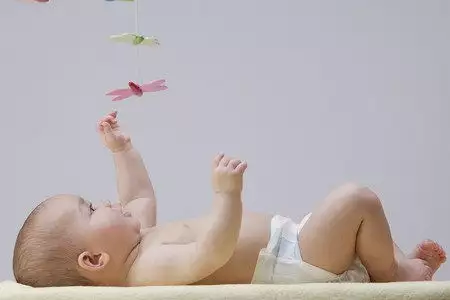
END OF ONE MONTH OF LIFE
GROWING
Briefly lifts head in tummy position, at least for 3 seconds.
SITTING
When raising the baby to a sitting position, the head falls backwards. The trunk and limbs show moderate tension. Held in sitting position briefly lifts head (1-2 seconds)
WALKING
The support reflex is maintained, which is to straighten the legs stiffly while resting the legs holding the pasterns against a hard surface. This reflex disappears by 3 months of age.
GRIPPING
The grasp reflex persists, the hands are clenched into fists.
PERCEPTION
The child tries to "fix" - keep his gaze on an object held about 20 cm from his face. He/she tries to look even when we slowly move the toy, then we speak of "following the object".
SOCIAL BEHAVIOUR
The baby observes the mother during breastfeeding. Snuggles against the mother's warm skin. Calms down when held in arms.
MAKING SOUNDS
Continues to demonstrate his displeasure by shouting, but some mothers can distinguish whether the shouting is related to hunger or, for example, to tiredness.
1 MONTH - WARNING SIGNALS IN THE BABY
U - baby does not react to strong sounds, does not focus his eyes on a toy, does not make any sound other than a uniform scream
E - does not look at mum, does not calm down when cuddled and stroked, does not cry at all
R - does not lift head in position on stomach, does not crawl, does not squeeze finger placed in hand.
The child needs to be checked for vision and hearing and a neurological assessment especially of muscle tone.





